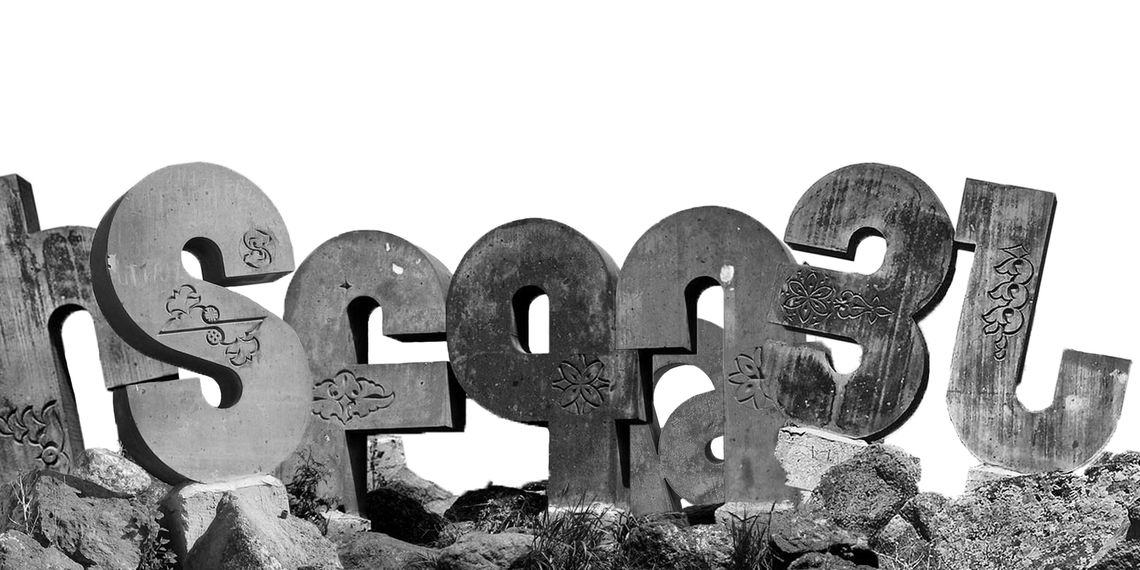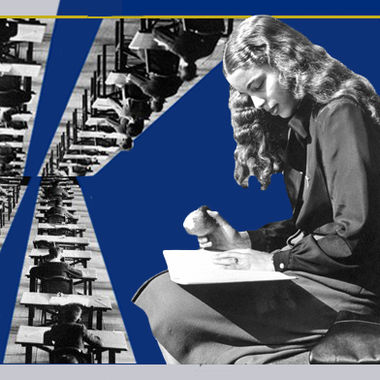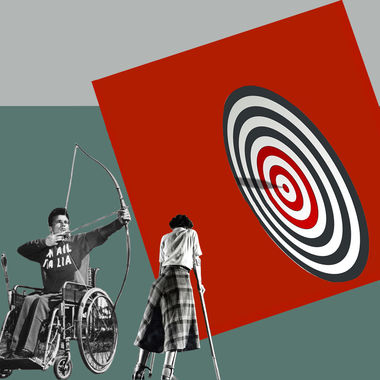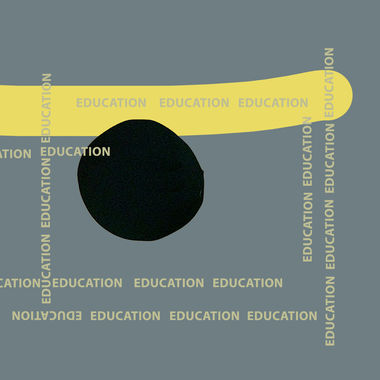Mon Nov 18 2019 · 9 min read
Making Sense of the ‘Controversy’ Behind Education Reforms

By Avnik Melikian

I repatriated to Armenia when I was a teenager. To get into Yerevan State University, I had to take an entrance exam on Armenian history and language. During my first semester, I had a mandatory Armenian class, where we studied the same grammar rules that we had studied for the entrance exam. In contrast, 90 percent of our reading materials were in Russian, a language that was neither a mandatory course nor part of the entry exam—Armenian was. Fast forward to my senior year of university: I had excelled in academic English, I understood academic Russian quite well, but my academic Armenian—well, that was a different story. A mandatory course on Armenian language did not help me explore academic literature or eloquently convey academic text.
Why is this personal story relevant?
Recently, the youth wing of the Armenian Revolutionary Federation (ARF, or Dashnaktsutyun Party) started protests demanding the resignation of the Minister of Education, Science, Culture and Sport (MESCS), Arayik Harutyunyan, over a proposed draft reform agenda that would eliminate the mandatory requirement for Armenian language, literature and history in institutions of higher education. It is important to note that the proposal does not eliminate the courses themselves, only the ministry requirement for students to take them. The ministry clarified that individual universities still had the flexibility to keep the courses mandatory for their own students, if their administration chose to.
This furor over the proposal did not come about abruptly. It was preceded by several incidents surrounding the MESCS, including discussions about whether the history of the Armenian Apostolic Church should continue to be a separate course in schools. Furthermore, the MESCS funded a contemporary dance performance that some people found controversial. Finally, the Ministry provided partial financial support for a documentary about Armenian transgender weightlifting champion Mel Daluzyan.
Let’s explore the educational reforms individually.
Armenian Language and History
During the December 2018 parliamentary election, the campaign platform of the My Step Alliance included a provision on giving universities more autonomy and academic freedom. There were no objections to this policy at that time. In fact, as the Alliance took 70 percent of the votes cast, they received a broad mandate to deliver the policies they promised. Leaving curriculum decisions to universities’ own individual governance structures aligns with this election promise. The decision extends greater responsibility to the university leadership. But why are some groups protesting it? Here are several arguments against the reform:
-
“The freedom of choice may lead to the exclusion of Armenian language and history subjects from university curricula, which will consequently lead to lower levels of literacy and the loss of national identity.”
The implication of this argument is that we don’t trust the deans and faculty to make the right decision in regard to Armenian courses. However, in that case, should we trust them to decide what other subjects should be included in their curricula or even conduct the general management of the university? If that is the case, then why are the protesters not touching upon these issues? -
“Students and young professionals should be able to communicate in advanced and eloquent academic Armenian, a skill that they are not learning during standard K-12 schooling.”
As much as this argument is true, as already mentioned in my personal story, the mandatory Armenian class at university does not contribute toward achieving this goal. My Armenian only improved when I started putting it into practice at work, which means that students need more practical experience in using advanced Armenian - including reading academic literature in Armenian, as well as writing and communicating in Armenian at university and not be obligated to use Russian readings and textbooks. Additionally, the issue of course content, methodology and delivery of Armenian language, literature and history classes in general education must be part of the conversation. -
“Professors in the philology and history faculties, who currently teach these subjects, would lose their jobs.”
If the courses become non-obligatory, a few faculties may decide they no longer need Armenian classes for certain disciplines, but most faculties will realize that courses on academic Armenian, professional communication in Armenian and most importantly translated terminology and literature are necessary. Thus, only the nature of these jobs will change, while becoming more effective and practical. Taguhi Ghazaryan, an MP from the My Step Alliance who graduated from the Faculty of Philology at Yerevan State University, pointed out in an interview that these lecturers could be engaged, for instance, in the preparation of toolkits for academic essay writing and translations of terminology and academic literature.
History of the Armenian Apostolic Church
The next major topic of recent debate has been the state indicators and course programs for general education (K-12), which are now being reviewed. One of the possible proposals being discussed is to take the “History of the Armenian Apostolic Church” course out of the curriculum and combine it with the course on the “History of Armenia.” Arevik Anapiosyan, a MESCS Deputy Minister, highlighted in a public discussion that no final decision has yet been made on this.
Different groups, including the church, are unhappy with this proposal. But what is the objective of a course on the history of the Armenian Apostolic Church that is separate from Armenian history? It is important to differentiate three phenomena: religion, history and proselytism.
-
Religion is a set of beliefs. Whether a person personally accepts them or not is a private matter. It can be studied as a social phenomenon, especially from a comparative perspective.
-
History is a comprehensive, unbiased (to the extent possible) record of past events.
-
Proselytism is the spreading of one’s own beliefs and convictions, often involving an aspect of unwelcome pressure.
If the course on the History of the Armenian Apostolic Church does not intend to preach Apostolic Christianity (as consistently claimed by representatives of the Church), and if this course is purely history, why shouldn’t it be integrated into the rest of Armenian history?
The current classes teaching the history of the Armenian Apostolic Church present issues for a secular education system. The church representatives or history teachers leading the class often encourage students to pray before class starts not fully respecting or potentially violating the rights of religious minorities or non-religious people.
Furthermore, as historian Vahram Toqmajyan points out, the classes do not objectively portray the negative pages of the church’s history, such as persecutions and oppression by the church in the past. If school education is not aimed at giving young citizens an objective and true version of history, then what’s the purpose of it at all? One argument is that these classes make children more patriotic. Interestingly, in the same interview, MP Taguhi Ghazaryan asks the interviewer: “Have you studied the history of the Armenian Apostolic Church in school?” to which the interviewer says no, and she continues, “Can I claim that I am more of a patriot than you are [merely for that reason]?”
The reason this course was introduced in schools at all was that the history of the church and Christianity was cut out of Soviet-era history books. When Armenia became independent, there was a need to fill the gap. Now, the MESCS is trying to integrate these two subjects to not only have a comprehensive history course in school but also to demonstrate that the history of the Armenian Apostolic Church is an integral part of the history of Armenia.
Yet the goal of this article is not to justify the policies of any ministry or institution, but to try to bring the discourse from an uninformed and manipulative debate to more concerning and urgent matters.
What Are the Other Areas of Concern?
The draft law on higher education, as well as the general reform process undertaken by the MESCS do warrant criticism—both academic and procedural. Below are several concerns and issues related to the educational reforms:
-
The new draft law on higher education has several controversial points, some of which have been raised by the interim rector of Yerevan State University and many other practitioners. One shared concern among different university faculty and staff is that the draft requires the board of trustees of universities to be composed of 25 percent of members appointed by the MESCS, 25 percent appointed by the government, 25 percent professors and 25 percent students. This means that the government (thus the political elite of the time) will be able to form and control 50 percent of the board of trustees of all universities, which have the authority to elect rectors. Self-governance is key to institutional autonomy for institutions of higher learning. The pursuit of academic freedom is a basic human right. Universities should be allowed to determine how to run their institutions. That includes governance and appointing faculty, determining admission requirements, developing curricula and defining organizational structures and policies.
-
Regarding curriculum and classes, it’s not only a problem of what is taught, but also how it is taught. The methodology of teaching history, for instance, especially to adult students, pushes them away from their own history. When they are required to memorize countless dates and names by heart, while not being required (and in some cases not even allowed) to analyze events and draw parallels, the class becomes uninteresting and inefficient. The same applies to the Armenian language. If we feel the necessity to have Armenian grammar classes in universities, it means that the K-12 system has not accomplished its most fundamental objective - teaching students their own language.
Overall, especially in institutions of higher education, generalized mandatory subjects create a sense of resentment. Hence, it is crucial to ensure that the reform process is accompanied with improvements in the way we teach in schools and universities as well, thus also addressing the root cause of the problem.
-
Speaking of the manipulations and unintelligent debate surrounding the proposed reform, the Ministry itself is partially responsible. It has allowed the public discourse over the reform to center on the issue of making the Armenian language and history optional in universities and combining church history with Armenian history in general education. Although Anapiosyan stated in a discussion back in March that the MESCS is not rushing toward major reforms, “since rapid reforms and changes are dangerous and not well thought-out,” many representatives of the field believe that the process has taken too long and simply introducing legislation won’t solve the “crisis” in the educational sector.
-
Furthermore, as I pointed out in a previous article, legislation can be reduced to mere pieces of paper on a shelf if they are not accompanied with the necessary toolkit and a favorable environment for implementation. In this case, the real reforms won’t come to life if some of the people responsible for implementing them are, as student activist Davit Petrosyan puts it, the corrupted rectors, trustees, deans or student unions who stayed in universities after their sponsors - the previous regime - were rejected. As important as the legislation is, it needs to be accompanied with practical and “on-the-ground” transitions and changes. The educational sector is in need of an “inside-out” tidying up process.
Finally, one of the ministry’s major issues, and this applies to most governmental institutions in Armenia, is communication and public relations. Government officials do not have the toolkit or the skills to communicate their reforms to the public in an understandable and relatable manner. This includes not only presenting activities and agendas, but also preparing society for possibly controversial - yet necessary - decisions. Instead, with a major (dis)information machine working against the current authorities and progressive agendas, every debate and discussion turns into a finger-pointing debacle.
also read
The Challenges of National Educational Assessments in Armenia
By Hayk Daveyan
While Armenia has participated in several international comparative educational assessments, and has designed national assessment tools, neither have been implemented properly. Today, more than ever, there is a great need to properly analyze existing data that can inform educational policy making and curriculum development.
Araratian Baccalaureate: Transforming the Future or Creating Selective Education?
By Lusine Sargsyan
The Araratian Baccalaureate, a public-private partnership between the Armenian Government and Ayb Education Foundation launched under the previous administration, came under the spotlight when Education Minister Arayik Harutyunyan questioned the need for “elite” schools and the financial efficacy of the program.
Sex Education, Stereotypes and Disabilities
By Kushane Chobanyan
Sex continues to be a taboo subject in Armenia. When it comes to sexual relations between individuals with disabilities, the misconceptions and taboos are even greater, writes Kushane Chobanyan.
From Isolation to Inclusion: Children With Special Needs and Their Right to Education
By Lusine Sargsyan
Dismantling decades of prejudice and perceptions about people with disabilities is not an easy task. The inclusion of children with disabilities and special needs in public schools is not an exception, however, attitudes are slowly changing.
Comments
Noric Dilanchian
11/18/2019, 10:15:30 PMThank you for your valuable article. In Australia federal government mandates on what the 40 or more universities teach and how they are funded has distorted the traditional quality and benefits of university education. The motivations of governments striving for power through short term means too win popularity are different to the long term needs of students, educators and researchers. Read that as a comparative case study of how educational outcomes can go backwards over decades when governments direct what to teach, where, for how long and with what budget. In Australia by the way education is a major foreign revenue earner, with very high numbers of students from abroad, especially Asia. Making education appealing to students abroad can increase education services income generation for Armenia’s educational institutions and economy generally. As for religion in education, sure, teach it along with other belief systems. Armenian history is not bracketed, and history did not end, with the adoption and dominance of Christian beliefs.








We are pleased to open up a comments section. We look forward to hearing from you and wish to remind you to please follow our community guidelines:
EVN Report welcomes comments that contribute to a healthy discussion and spur an informed debate. All comments will be moderated, thereby any post that includes hate speech, profanity or personal attacks will not be published.